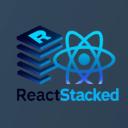
Js Devs Launch Space Apps With React In 2025
Javascript devs in 2025 use react and next.js to build space apps, riding nasa and spacex’s lunar wave.

0
0

Javascript devs in 2025 use react and next.js to build space apps, riding nasa and spacex’s lunar wave.
